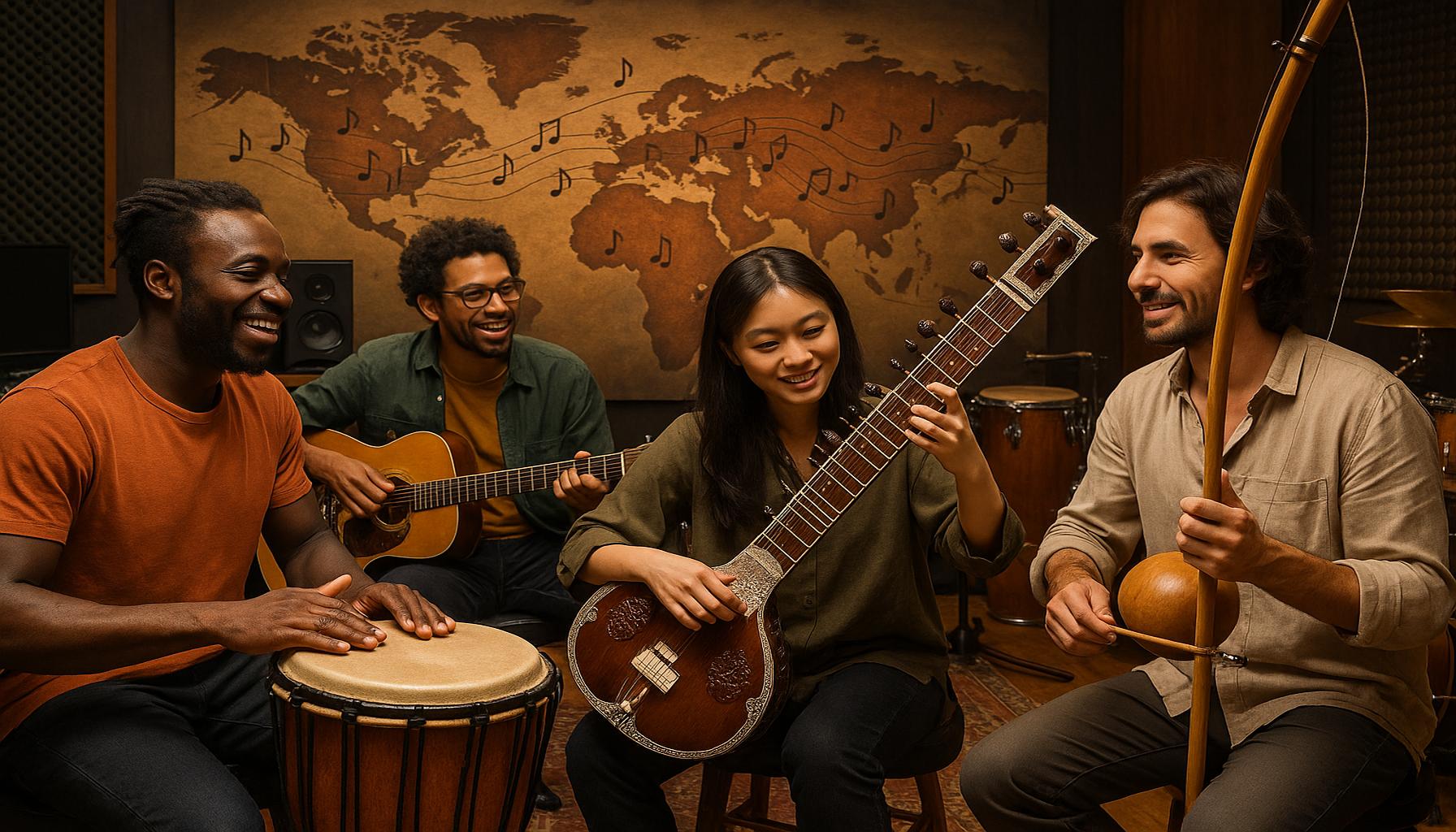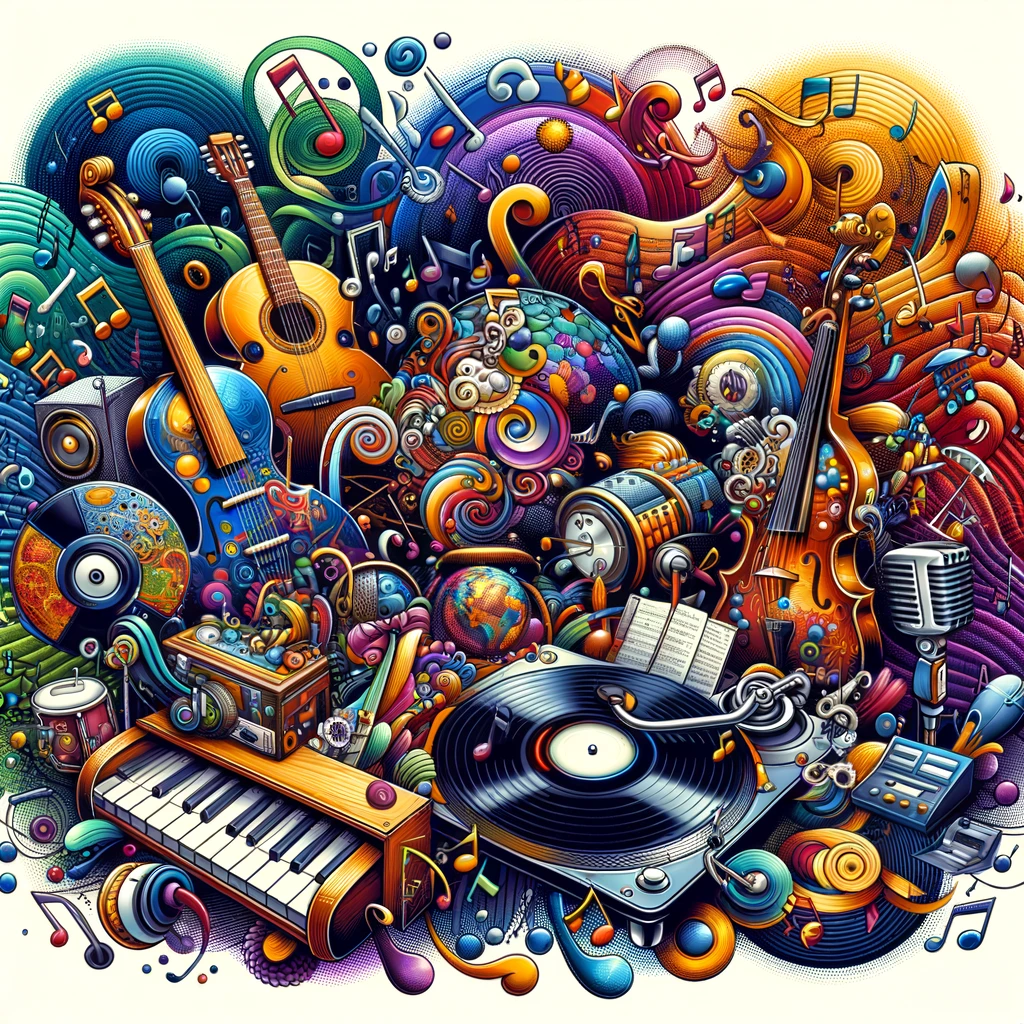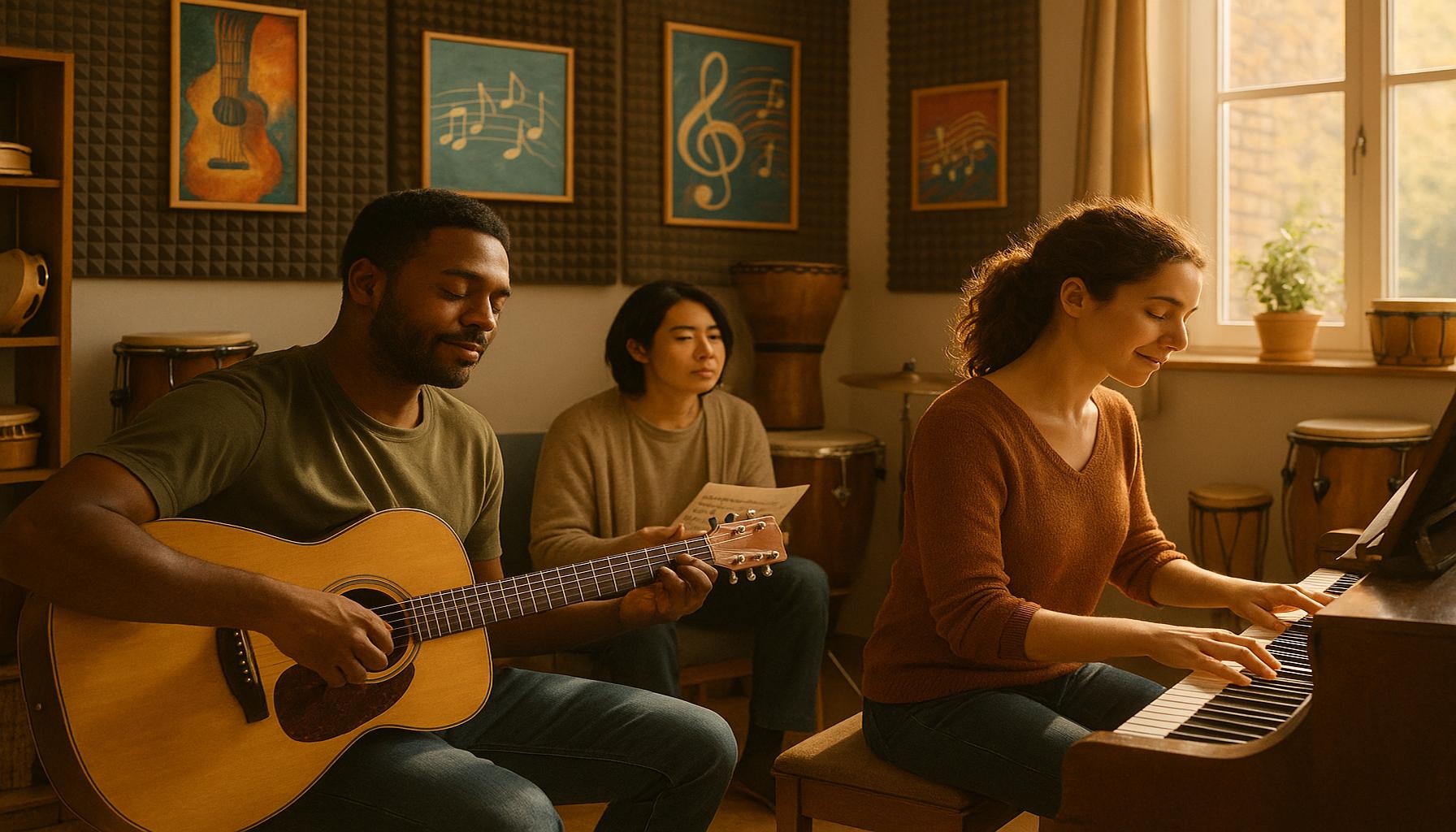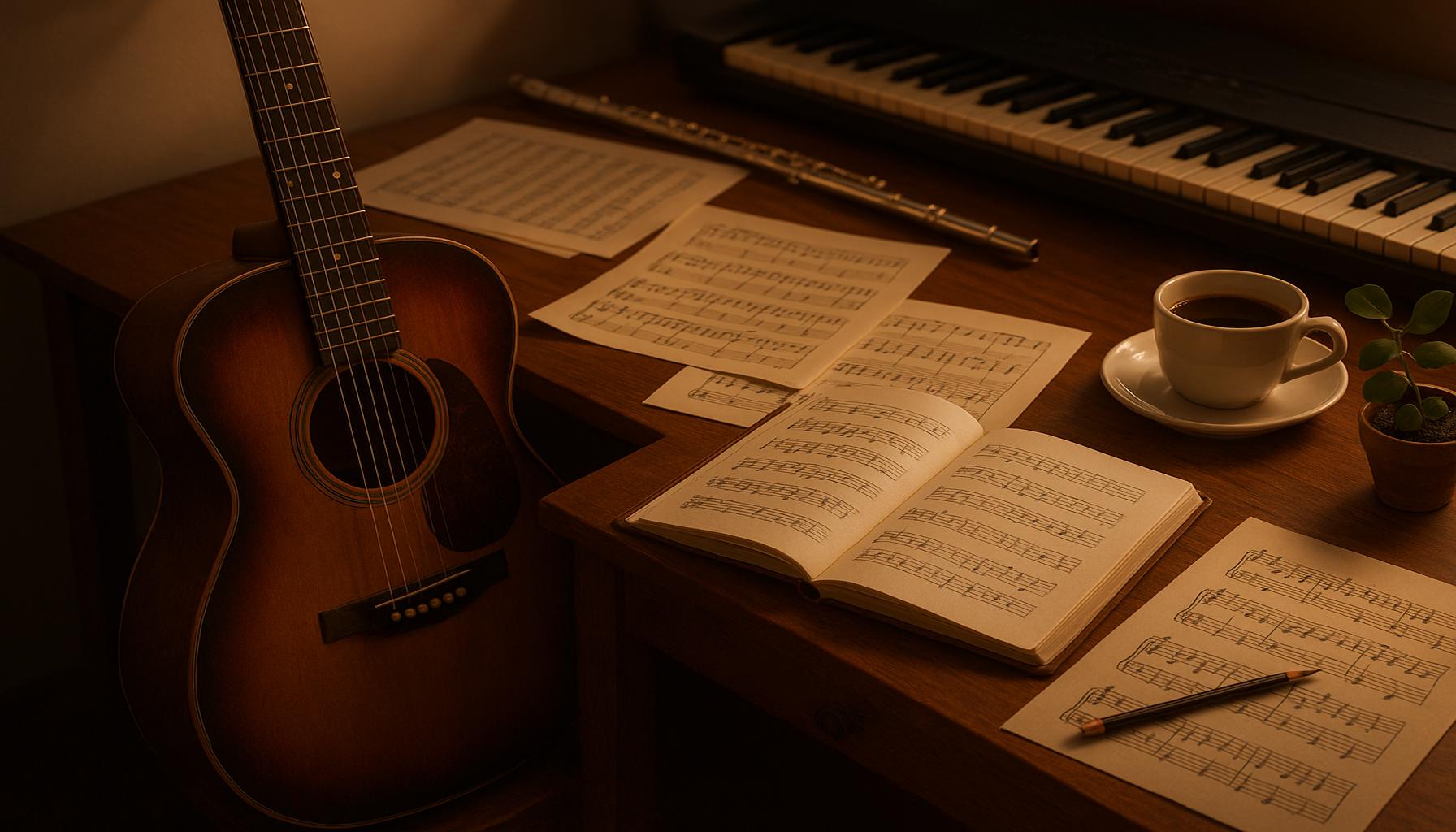Exploring New Genres: The Influence of Cultural Diversity on Musical Creation

The Power of Musical Collaboration
One of the most compelling aspects of modern music influenced by cultural diversity is the rise of collaboration among artists from different backgrounds. These partnerships result in innovative works that often blend distinct musical traditions. For example, the collaboration between American rappers and Latin pop stars has led to global hits, such as “Despacito,” remixed with Justin Bieber’s input, bringing together reggaeton rhythms and mainstream pop beats. This type of collaboration not only creates catchy tunes but also fosters cultural exchange, allowing listeners to appreciate music from different parts of the world.
Fusion Genres: The Sound of Cultural Convergence
Fusion genres have revolutionized the music scene by incorporating elements from various cultures. Styles like Afrobeat, which combines traditional African music with jazz, funk, and highlife, showcase how diverse influences can create entirely new auditory experiences. Established artists like Burna Boy and Wizkid have brought Afrobeat into the global limelight, showing how cultural exchanges can produce resonant sounds that appeal to international audiences. Similarly, Reggaeton emerged from the intersection of Caribbean rhythms and hip-hop, reflecting the socio-political landscapes from which they originated. Each genre tells a story about the cultures it blends, making it a rich field for exploration.
The Role of Technology in Musical Evolution
In today’s digital age, the global accessibility provided by the internet has significantly influenced music creation. Artists can easily connect with others across the globe, access diverse musical resources, and incorporate various styles into their work. Platforms like SoundCloud and YouTube serve as launchpads for emerging artists, letting them share their music with a worldwide audience instantly. For instance, artists like Lil Nas X gained rapid popularity by blending country and hip-hop genres, exposing listeners to the exciting possibilities that arise when cultural boundaries collapse.
Elements of Cultural Diversity in Music
The impact of cultural diversity in music manifests in several fundamental elements. Instrumentation plays a crucial role; the integration of unique instruments such as the sitar in rock music or the djembe in pop tracks can elevate a song’s texture and emotional impact. Furthermore, traditional rhythms and melodies from various cultures inspire contemporary compositions. For instance, the use of handclaps and percussive beats popularized in African music can be heard in countless pop songs today.
Moreover, lyrical themes often delve into cross-cultural experiences, exploring shared human stories that resonate universally. Artists like Hozier and Janelle Monáe weave narratives that reflect their diverse backgrounds, fostering empathy and understanding among listeners. These lyrical explorations underscore the complex dialogues between cultural identities and experiences.

Conclusion
As we explore the rich tapestry of music shaped by cultural diversity, it becomes evident that this phenomenon not only inspires fresh genres but also transforms the very fabric of musical creation. Today’s artists are not just creators but cultural ambassadors, using their platforms to foster understanding and appreciation of global diversity. The ongoing evolution of music invites listeners to engage with stories, rhythms, and sounds that might be unfamiliar, ultimately highlighting our shared human experience.
DISCOVER MORE: Click here to explore sustainable crafting
The Rise of Global Soundscapes
As the world becomes increasingly interconnected, the rich tapestry of cultural diversity influences musical creation in exciting ways. The fusion of distinct genres facilitates a vibrant soundscape that mirrors the anthropological shifts within today’s society. Artists are drawing inspiration not just from their local environments but also from global influences, leading to innovative compositions that appeal to varied audiences. This phenomenon highlights how cultural exchange serves as a fertile ground for musical experimentation, giving rise to genres that are both fresh and reflective of a collective human experience.
Case Studies of Innovative Collaborations
The mid-20th century opened up pathways for genre-blending that included influences from jazz, rock, and folk, but the digital era has amplified these interactions exponentially. Take, for instance, the collaboration between Shakira and Wyclef Jean on the hit “Hips Don’t Lie.” The incorporation of Colombian cumbia rhythm paired with hip-hop elements creates a tantalizing sound that transcends borders. Another remarkable example is the partnership between Kacey Musgraves and J Balvin in their song “Que Viva Mi Patio,” which beautifully merges country storytelling with reggaeton beats, showcasing the endless possibilities that emerge when diverse musical styles converge.
Popular Cultural Influences
The exploration of new genres through cultural diversity is not merely limited to individual collaborations. Several contemporary movements have emerged, each characterized by distinct influences, such as:
- World Music: Incorporating elements from various traditional music systems, artists like Yo-Yo Ma and his Silkroad Ensemble have popularized cross-cultural collaboration.
- Hip-Hop: The genre’s global reach has inspired artists to infuse it with regional sounds, resulting in unique hybrids. Examples include the rise of trap music, which incorporates influences from Latin American music, as seen in artists like Bad Bunny.
- Indie Folk: Indie artists often draw inspiration from global folk traditions, enriching their sound with universal themes of love, longing, and social issues. Never Shout Never gives depth to this by blending elements from traditional folk music with modern pop.
These genres not only attract wider audiences but also encourage appreciation for the cultures they represent. The artists engaging in this cross-pollination are not only entertainers—they are cultural ambassadors, pushing listeners to delve deeper into the stories and traditions behind the sounds.
Beyond the Notes: The Emotional Connection
Another fascinating aspect of this cultural convergence is the emotional resonance that blended genres can create. Different musical traditions elicit varied emotional responses, and when artists borrow from these traditions, they open up new avenues for connection with their listeners. Music becomes a powerful tool to bridge gaps between cultures, fostering empathy and understanding. For instance, songs that infuse traditional African calls with modern electronic beats can evoke both nostalgia and a sense of communal identity, creating a deeply emotional listening experience.
As we further explore the avenues created by cultural diversity in music, it’s essential to recognize that every note played, every beat dropped, and every lyric penned is a product of this rich exchange. In this light, music is no longer just an entertainment medium but a dynamic dialogue reflecting our world’s myriad influences.
Exploring New Genres: The Influence of Cultural Diversity on Musical Creation
As cultural boundaries dissolve in today’s global society, musical innovation emerges through a fascinating blend of diverse influences. This phenomenon is not only reshaping traditional music genres but is also cultivating an environment ripe for creative experimentation. Artists worldwide are drawing from rich cultural tapestries, incorporating elements from folk songs, urban music, and classical traditions into their works. The result is a seamless fusion of styles that transcends geographical limits and creates a new, exhilarating auditory experience.
Collaborative projects between musicians from different backgrounds are exemplary of this trend. One notable manifestation is the rise of cross-genre collaborations, where musicians merge sounds from hip-hop, jazz, and world music. For instance, the collaboration between Angélique Kidjo, a Beninese singer, and Philip Glass, a minimalist composer, not only showcases how different styles can intermingle but also emphasizes how cultural narratives can inspire new compositions. These partnerships serve as a testament to the idea that diversity can be a source of inexhaustible creativity.
In addition to the collaborative spirit, the digital age has enabled musicians to access an unprecedented wealth of resources. Online platforms facilitate the sharing of music cultures and traditions, allowing aspiring artists to explore and replicate various genres from across the globe. This democratization of music creation empowers individuals, leading to a burgeoning explosion of new genres. For example, the emergence of “Afrobeats” reflects a direct dialogue between African rhythms and Western pop, opening doors for fresh sounds that resonate with a global audience.
Furthermore, cultural festivals and exchanges are vital in fostering an appreciation for diverse musical styles. These events serve as a melting pot for ideas, encouraging various artists to draw inspiration from one another while gaining exposure to new audiences. This reciprocity not only enriches the artists’ own music but also broadens the horizon for music lovers around the world, inviting them to embark on a sensational auditory journey.
| Advantages of Cultural Diversity in Music | Key Features |
|---|---|
| Enhanced Creativity | Artists draw on multiple influences to create innovative sounds. |
| Cultural Exchange | Encourages interaction between diverse musical traditions, enriching the art form. |
The exploration of new genres fueled by cultural diversity invites us all to engage with music on a deeper level. By embracing these rich influences, we not only celebrate creativity but also honor the profound connections between different cultures, fostering a more unified global music scene.
DISCOVER MORE: Click here to dive into exciting painting techniques
Innovative Platforms for Cultural Sharing
As artists from around the globe collaborate and blend musical styles, innovative platforms have emerged to further facilitate cultural sharing. Social media, streaming services, and video platforms like YouTube and Spotify have redefined how music is consumed and discovered. These platforms allow artists to reach audiences that would have previously been inaccessible, leading to a surge in the appreciation of cross-cultural sounds.
The popularity of playlists dedicated to global genres, such as “Global Hits” or “Chill Vibes from Around the World” on streaming services exemplifies this trend. Such playlists encourage listeners to step beyond their musical comfort zones and explore songs that incorporate diverse cultural elements, creating a space for international genres to flourish. For example, the ascent of the K-Pop phenomenon illustrates how a distinctly South Korean genre has taken the world by storm, blending traditional Korean melodies with Western pop, hip-hop, and rock influences.
Cultural Festivals as Focal Points for Genre Fusion
Music festivals are another key element fostering cultural diversity in musical genres. Events like Coachella, Glastonbury, and the Global Citizen Festival serve not only as a platform for mainstream artists but also for those pushing the boundaries of genre through cultural exploration. These festivals invite audiences to experience unique sounds, often featuring international artists who introduce their native styles to new listeners.
Take, for instance, the Afropunk Festival, which celebrates Black culture through music, art, and fashion while promoting inclusivity. Its lineup frequently includes artists from various backgrounds, showcasing the intersections of genres like punk, rock, hip-hop, and world music, thus attracting a diverse audience eager to explore new sounds. Such events highlight how music can serve as a melting pot for creative expression and cultural appreciation.
The Power of Technology in Shaping New Genres
The advancement of technology has also been instrumental in enriching the diversity of musical creation. Digital audio workstations (DAWs) allow artists to integrate sounds from different cultures into their projects seamlessly. Music production software enables the manipulation of traditional instruments and sampling of global soundscapes, allowing for a unique blend of sonic textures. Today’s musicians can easily experiment with collaborative technology, connecting with other artists worldwide and sharing ideas instantaneously.
Additionally, platforms like SoundCloud and Bandcamp empower emerging artists to distribute their music, enabling them to carve their niche in the industry without the need for a major record label backing. This accessibility fuels a diverse range of musical expressions, allowing sounds from underrepresented cultures to gain prominence and allowing musicians to shape new genres that reflect a globalized society.
Inspiration from Global Issues
Beyond individual preferences, socio-political and environmental issues are some of the themes driving musicians to explore cultural diversity within their work. Recent movements such as the Black Lives Matter initiative and the fight against climate change have prompted artists to unite across genres, crafting songs that resonate with shared values. For example, the intersection of reggae, hip-hop, and folk in protest songs highlights how artists draw upon their respective cultural backgrounds to address universal societal challenges.
Incorporating elements from various genres not only sparks innovation but also connects listeners to the real-world narratives surrounding these global issues. Through music, storytelling transcends borders, and listeners are invited to engage with diverse perspectives in an era where cultural understanding is more crucial than ever.
DISCOVER MORE: Click here to dive into the world of art as self-expression
Conclusion
In conclusion, the exploration of new musical genres through the lens of cultural diversity reveals not just the transformation of sounds, but also the profound connections made between artists and their audiences. As we’ve seen throughout this discourse, innovative platforms and technological advancements have democratized music creation, allowing for a rich tapestry of global influences to interweave. From the rise of K-Pop to the eclectic vibes of world music festivals, today’s music scene is a living testament to the power of collaborative artistry.
The impact of socio-political movements on musical expression further underscores the ability of music to serve as a conduit for change, fostering empathy and understanding across different cultures. By integrating diverse musical traditions and modern influences, artists not only promote cultural appreciation but also address shared human experiences that resonate universally.
As listeners, we stand on the brink of a musical renaissance, where every genre carries with it the heritage of its various components. The dynamic world of music today invites curiosity, urging us to explore beyond our familiar soundscapes. With the continued appreciation for cross-cultural collaboration, the next wave of musical creation will undoubtedly pave the way for even more innovative genres that reflect the increasingly interconnected world we inhabit. Thus, by embracing this cultural diversity, we can look forward to a future enriched by a multitude of voices and stories, ensuring that the art of music remains a vibrant, evolving celebration of our shared humanity.


